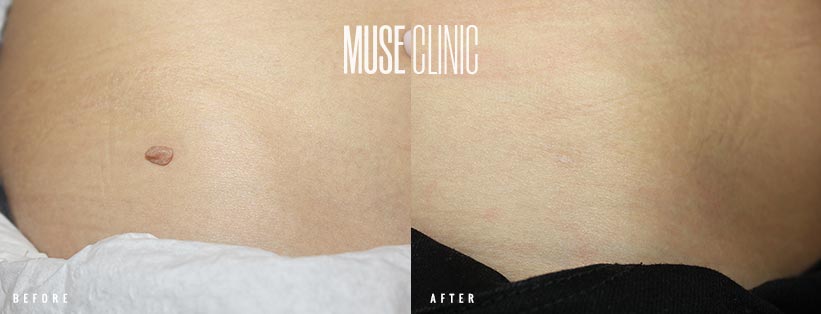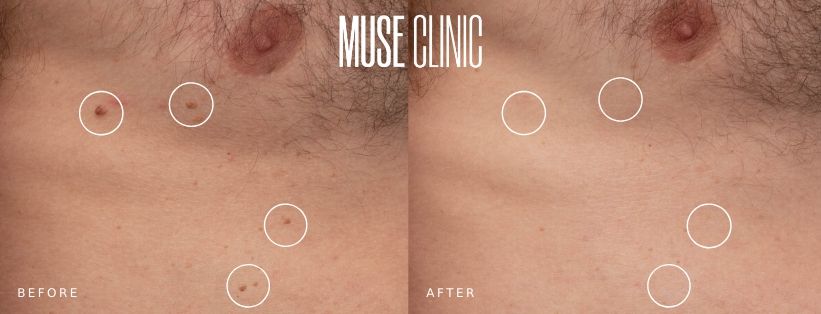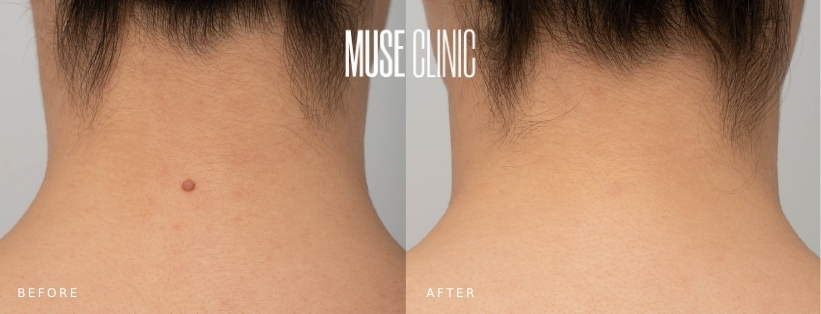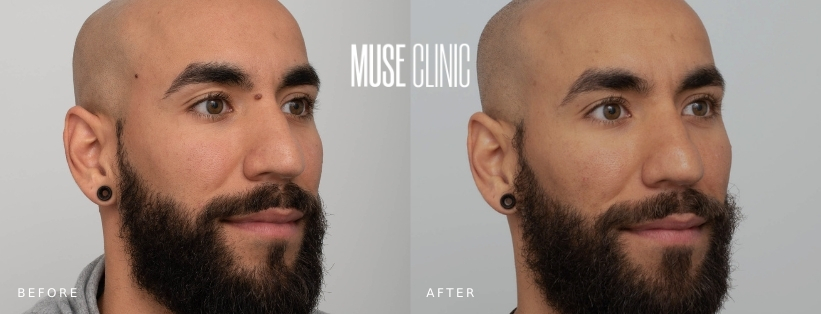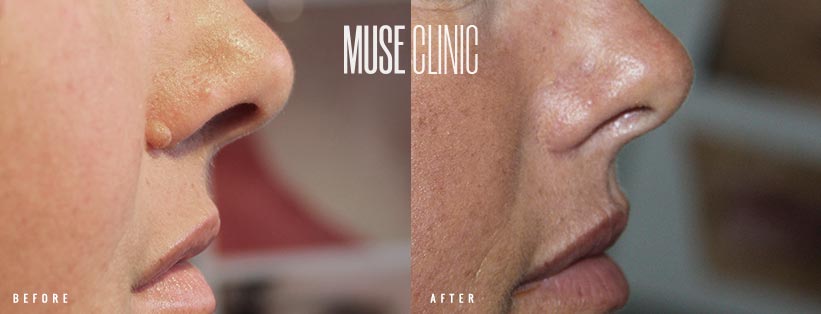Cosmetic Mole Removal Sydney Before and After
To some, moles are a sign of beauty. However, some patients dislike the appearance of their moles, which makes cosmetic mole removal a popular treatment, particularly amongst those who have fair skin. Moles are the result of sun exposure or genetics, causing compact clusters of pigmentation to appear on the top layer of the skin.
Most moles are completely harmless and are usually just aesthetically unappealing if anything at all. If you are unhappy with the appearance of a mole on your face or any other area of your body, cosmetic radiofrequency mole removal can be used to remove it, all without the need for incisions or sutures. This procedure is also suitable for skin tags, warts and other benign skin imperfections.
Before any mole is removed, however, it’s imperative that it be tested for any abnormalities first.
What to Expect During the Mole Removal
If it is determined that you are an ideal candidate for radiofrequency mole removal, a local anaesthetic will be used to numb the area that will be treated, ensuring you’re comfortable throughout your procedure.
Using the Ellman Surgitron® device, moles that protrude above the surface of the skin are gently shaved off layer by layer, while the skin is cauterised at the same time. This technique does not involve any cutting or stitching and since there is better control over depth during removal, scarring is minimal.
Cosmetic radiofrequency mole removal can be used to treat a whole spectrum of skin lesions in less than 30 minutes, provided that they are benign.
Following your treatment, you will receive an aftercare pack and post-procedure aftercare instructions that will help you care for your skin while it heals. Patients can return to work directly after their treatment.
Ideal Candidates for Radiofrequency Mole Removal
To determine whether someone is an ideal candidate for cosmetic radiofrequency mole removal, the skin and lesion will need to be evaluated to determine if it needs to be tested for abnormalities. The ideal mole removal candidate will be someone who wants to get rid of a raised and benign mole on their face or body. Skin tags, milia and warts can also be removed. An ideal candidate will be in good physical and mental health, will hold realistic expectations as to the results that can be achieved with the procedure and will be willing to follow the aftercare instructions.
Certain health conditions can deem that someone may not be suitable for cosmetic radiofrequency mole removal. These can include certain skin conditions, if the skin in the treatment area is damaged (such as sunburnt or has an active skin infection), if you have a cardiac pacemaker, and if you are pregnant or breastfeeding. A consultation at MUSE Clinic Sydney will help to determine your suitability for the radiofrequency skin mole removal treatment.
Costs of RF Mole Removal at MUSE Clinic Sydney
To determine the final cost for a mole removal treatment, you will need to have a consultation with Dr Lowe.
Costs generally do not vary a great deal between patients however on occasions the complexity of the mole location and size becomes a factor. Each patient will have a unique treatment area, which can influence the procedure time required, a factor that can influence treatment costs.
Only one treatment will be required for most patients, which is important to note when considering the costs of the procedure.
Typically the cost will be $500 for a single mole and $150 for additional moles treated during the same appointment. This price includes consultation, the mole removal procedure and any follow up appointments.
For more information on our treatment prices, please contact us via our enquiry form on the right side of the page and one of our friendly team members will get back to you as soon as possible.
Cosmetic Mole Removal Results and Recovery
Most patients will only need one cosmetic radiofrequency mole removal treatment. Due to the effectiveness of one single treatment, results are immediate. However, following your procedure, the treated area will need to be covered for one to two weeks to support the skin healing process. Patients will be able to return to work after the procedure and will be able to shower as normal.
Your skin in the treated area will appear red for up to three months, depending on the natural pigment of your skin. Generally, patients with fairer skin will notice milder redness of a pinker colouring. The flat wound that is left over once the mole has been removed will scab within the first week. It is important not to pick at the scab and to wait for it to fall off naturally. Sunscreen will be essential during this time and it is essential to follow all of our aftercare instructions as carefully as possible.
Our aftercare instructions will be tailored to each patient. Adding to the above directions, further instructions may include:
- Keeping the wound clean
- Avoiding direct sun exposure (as well as applying sunscreen)
- Applying a silicone gel twice daily
- Undergo a course of low-level light therapy to encourage the healing process
- Avoid laser therapy or hair removal therapy in the treated area
These instructions not only support a faster healing time but will also reduce the risk of complications such as scarring and infection.
Risks and Complications
Since the technique of the RF cosmetic mole removal procedure does not require any incisions, the risks and complications of the treatment are quite minimal. During recovery, patients may experience some swelling, tenderness, and bruising on the treated area for about a day after the procedure, however, there should be no bleeding in the area.
The main concern of the procedure is the risk of scarring, which is an inevitable part of any cosmetic procedure, particularly with cosmetic mole removal. However, cosmetic radiofrequency mole removal treatment poses minimal risk of scarring due to the incisionless method. To further reduce your risk of scarring, you will need to follow your preparation and recovery instructions as provided by one of our experienced clinicians during your consultation.
Some patients may also notice skin pigmentation or a re-growth of the mole in the case that some of the mole cells have been left in the treatment area and have not been fully removed during the treatment. If this does occur, patients may be able to undergo a second cosmetic radiofrequency mole removal procedure, or another treatment option available that can treat skin pigmentation.
